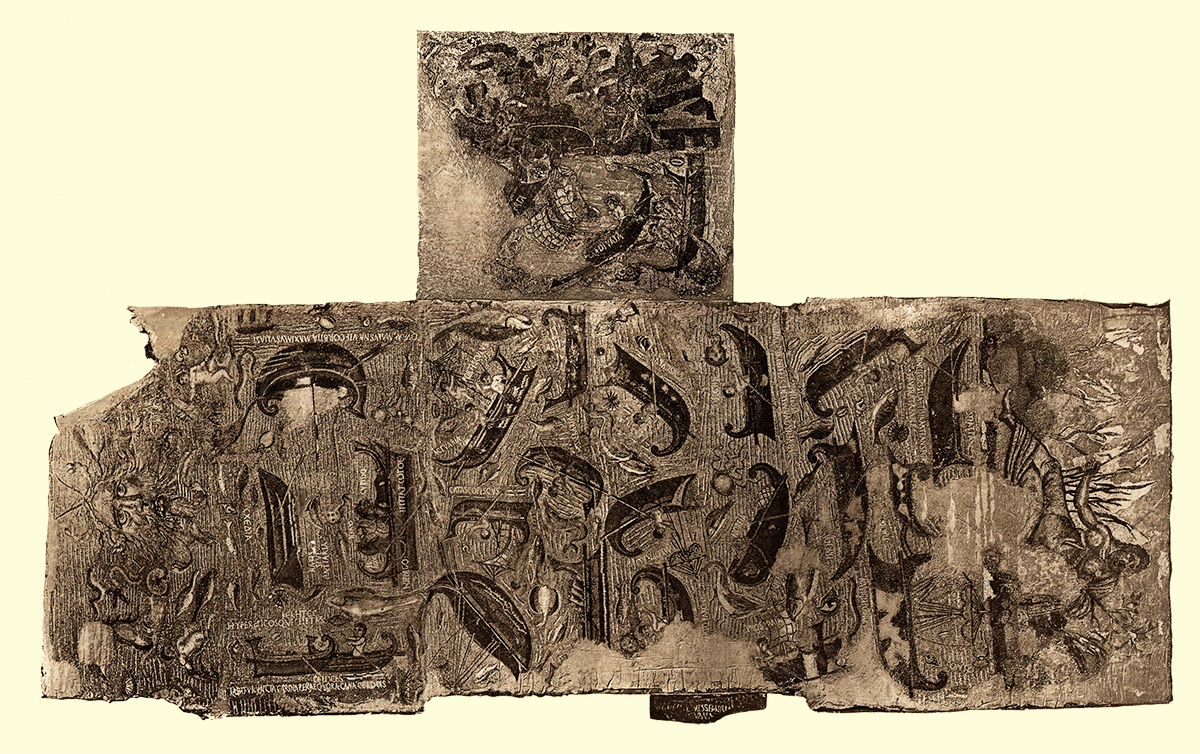
When we speak of ports, in our case Roman ports, we usually refer to temporary anchorages or berths where ships were unloaded or loaded. In most cases, the port was not an end point but a ship's cargo continued its journey by another vehicle, by road or water, to the hinterland.
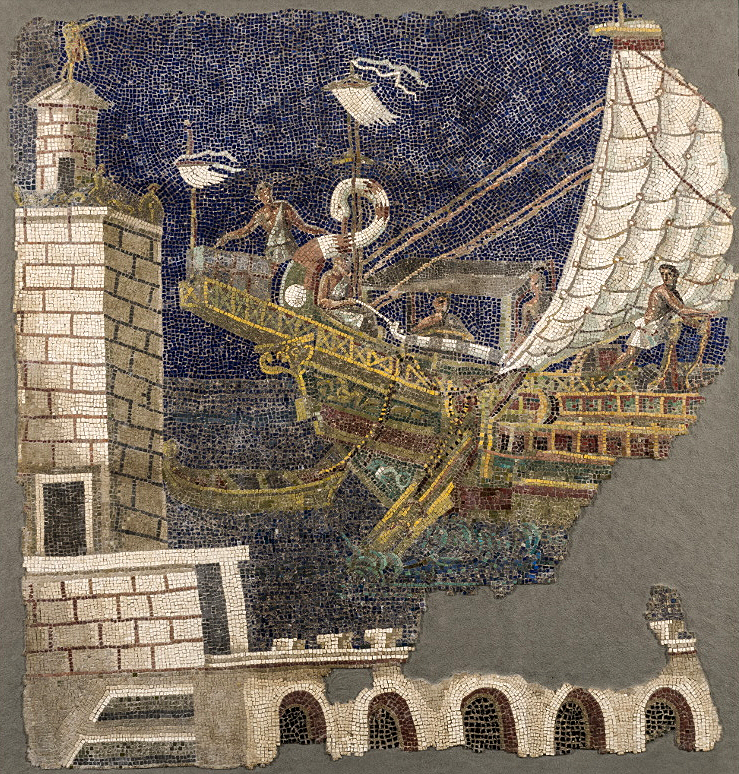
The large assortment of articles that was transported overseas each year required various types of ships. A ship carrying grain would have to meet different requirements than one carrying wood, amphorae or marble blocks (see 'Marble for Rome').
For economic reasons, an overseas transport will carry large and heavy loads. The manoeuvrability and draught of a seagoing vessel determined whether or not the ship could moor or had to drop anchor. In the latter case, other, smaller boats would have to bring the cargo to and from the shore. The unloaded goods then travelled later on via a river or canal to their next destination with the help of another kind of ships, suitable for navigating narrower and shallower waterways.
From written sources we know many of these ships and also the remains of various sunken shipwrecks give us an idea of what kind of boats we are talking about. In addition, there are of course many ships depicted in mosaics, wall paintings, etc. The only question is how reliable these images are. Often such a depiction of a ship served only as an entourage to tell a different message and were often depicted in outline. Of course, there were also artists who depicted the complex architecture of certain ships in detail, such as the creator of the mosaic on which we see the bow of a large cargo ship at the quay of Portus, the harbour of Rome (see figure 2).
Many designers used model books without knowing or having seen the ships, and without intending to reproduce them as faithfully as possible. Usually, the message that the image had to convey was more important than the correct depiction of the proper ship. In this article we want to look at one of the most important surviving lists of Roman ship models from antiquity on which we can classify an image or a found wreck to this day. In addition, we want to analyse some well-known and famous images of ships that seem to be real, in terms of whether or not they are true to life.
The Althiburus mosaic
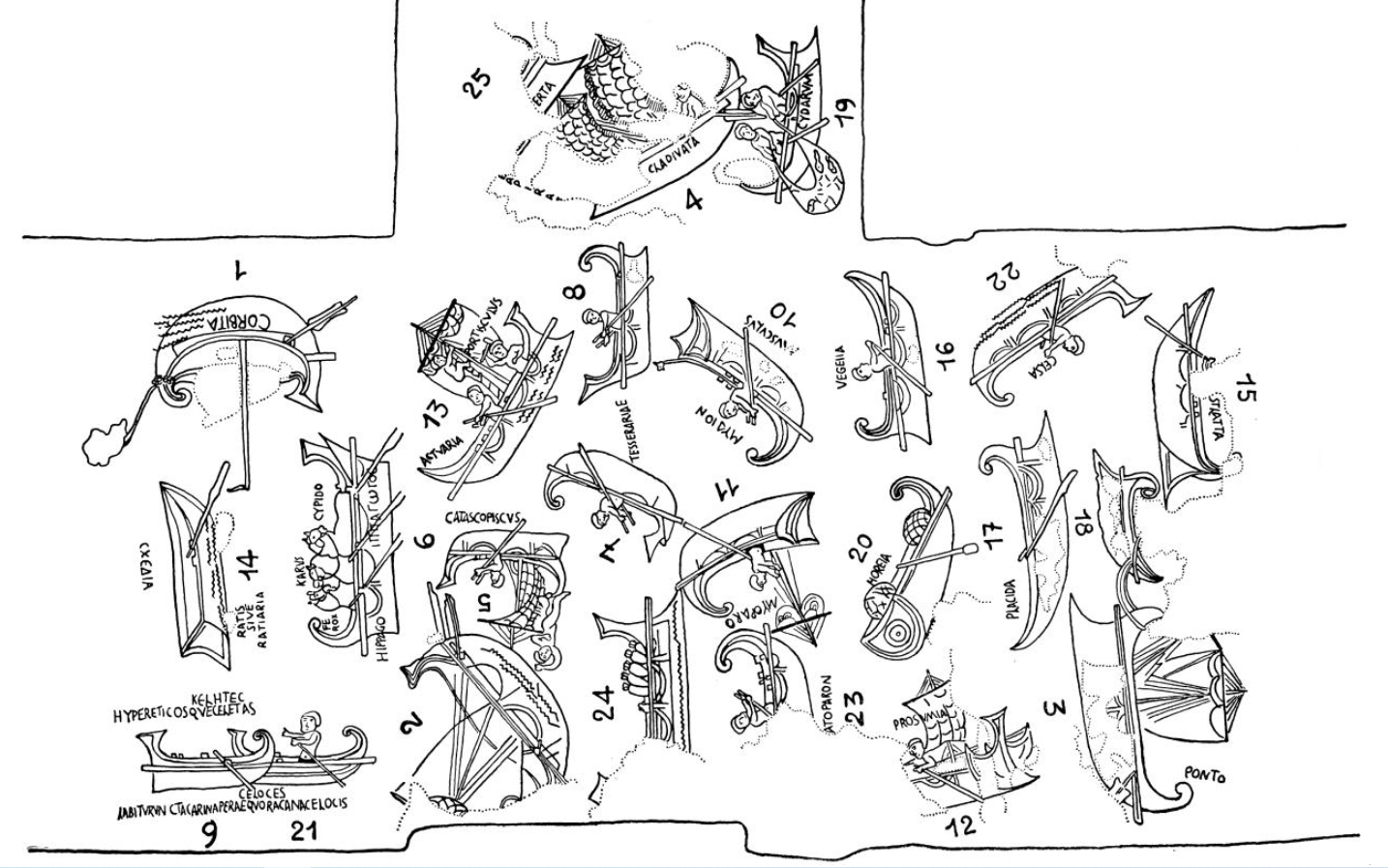
In 1895, in a Roman villa near the ancient city of Althiburus (in present-day Tunisia), a mosaic was found on which numerous ships are depicted and named. The ships depicted on this mosaic clearly only serve to distinguish between the various types of ships.
The Althiburus mosaic is dated to the third century AD and shows an almost scientific nautical knowledge in the form of 25 images of boats schematized to the extreme with corresponding names in Latin or Greek. The French historian and archaeologist Paul-Marie Duval numbered and described the vessels2. According to insiders, the mosaic is one of the most complete and accurate catalogues of Roman trading vessels left to us by Latin antiquity3.
The models
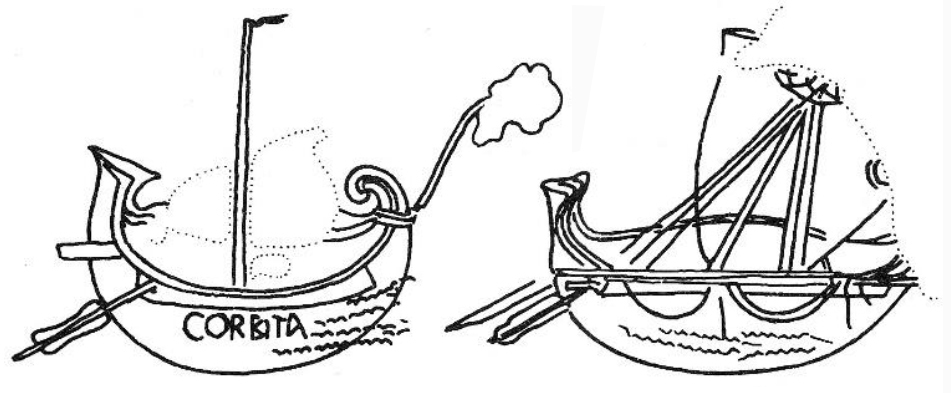 1 and 2 Corbita – a large round and symmetrical vessel with a high hull, a central mast and in front an artemon (headsail), usually set at an angle.
1 and 2 Corbita – a large round and symmetrical vessel with a high hull, a central mast and in front an artemon (headsail), usually set at an angle.
This type of vessel, the most common in commercial shipping, was adapted for heavy sea transport and belongs to the large family of naves onerariae (massive, heavily loaded cargo ships which were also used for troop movements).
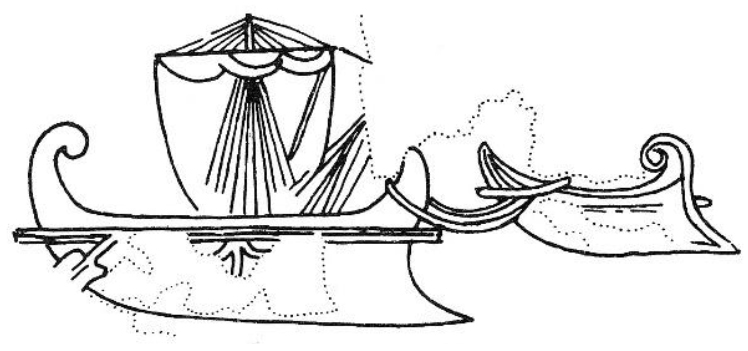
3 Ponto – a large asymmetrical merchant seagoing vessel with a keel extending forward, two masts and no oars. Probably from the southern coast of Gaul.
18 Ponto, Canoe version of 3
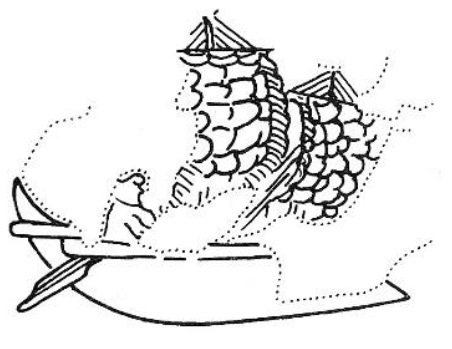
4 Cladivata – a large asymmetrical merchant ship with two masts, without oars, relatively slender and with a larger sail area than the Ponto.
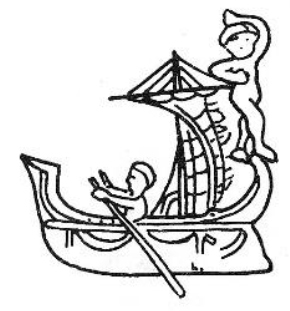
5 Catascopus (or catascopiscus) – an escort vessel with sail and oars and a very prominent bow. The vessel falls into the category ofnavis speculatoria (reconnaissance craft) and was used to support the war fleet and the police at sea.
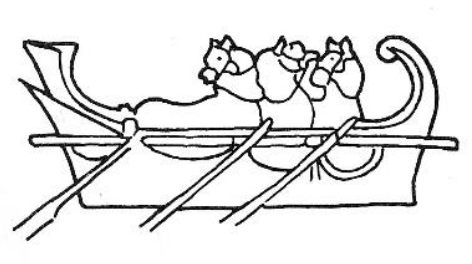
6 Hippago - a symmetrical ship for transporting horses. It was a rowing boat with an angular hull and a flat bottom. A ship for the inland waters.

7 and 8 Tesseraria – a light and fast boat, both symmetrical (7) and asymmetrical (8).
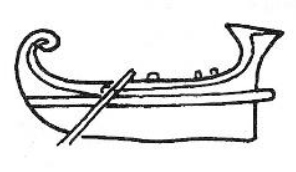
9 Celes (or Celox) – a fast and light rowing boat used as a courier with the sea police or with war fleets.
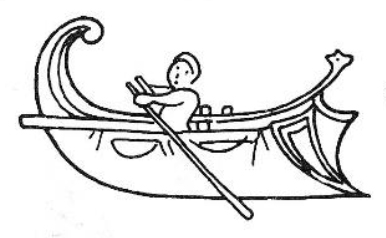
10 Musculus – a rather short rowing boat with a pointed bow that glided through the water like a 'musculus' (little mouse).
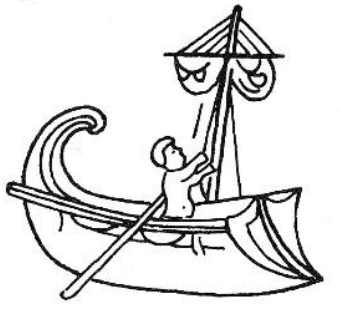
11 Myoparo – a light open ship with sails and oars; with a small mast inclined forward. A kind of medium-sized frigate often used by pirates.
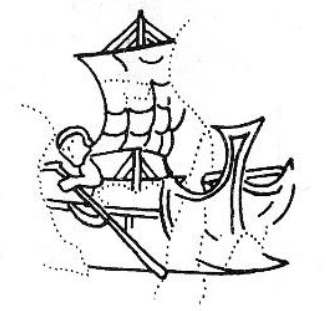
12 Prosumia – a small ship with a pointed bow, oars and a small sail in relation to the hull. Probably used as a reconnaissance vessel and for carrying passengers.
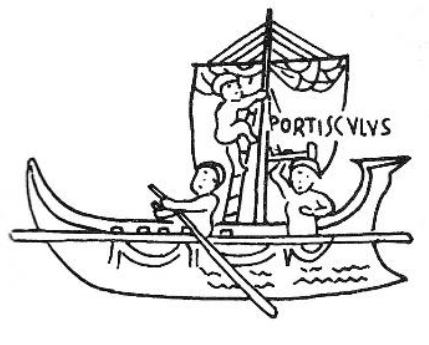
13 Actuaria 4– a merchant galley with sails and oars used for fast connections. The ship was equipped with 30 to 50 oars. Sometimes used for military purposes.
The actuariola was a small actuaria equipped with 10 oars.
14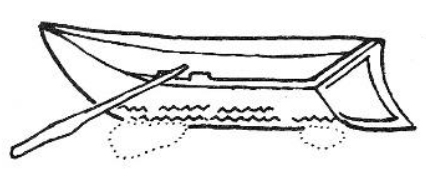 Ratis 5 – originally a raft, then a simple wide and flat rowing boat without a deck.
Ratis 5 – originally a raft, then a simple wide and flat rowing boat without a deck.
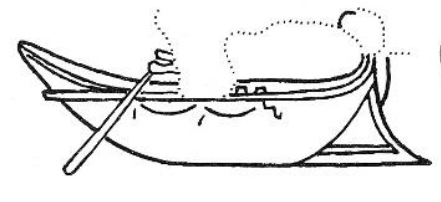
15 Stlatta – a large river boat.
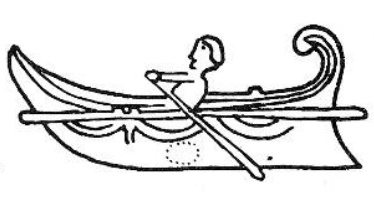
16 Vegeiia – a large elongated boat, possibly Gallic in origin. Very rare rigging and probably only used regionally. 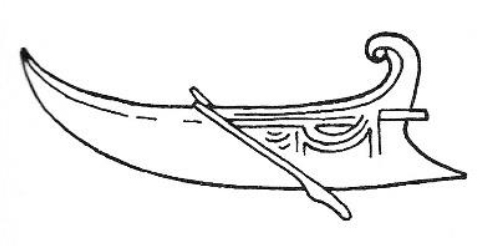
17 Placida – a pleasure boat with oars for calmer waters. It had an elongated shape with an inverted bow and receding hull.
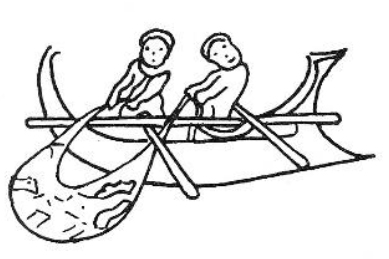
19 Cydarum – an asymmetrical boat for fishing or trading purposes from the first centuries AD.6
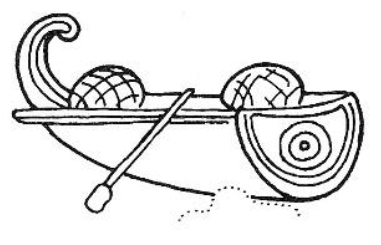
20 Horeia - a large, angular boat with a transom bow, used for fishing or for transporting goods. Both rowing boat and light sailing ship7.
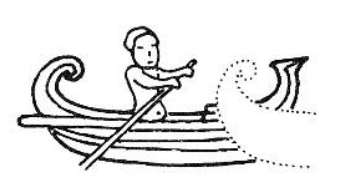
21 Celox (or Celes) – a fast and light military boat with oars, used as a courier in the naval police or within war fleets.
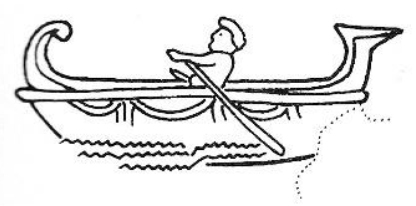
22 Celsa - a light rowing boat, similar to the Celox, but with a very high bow. 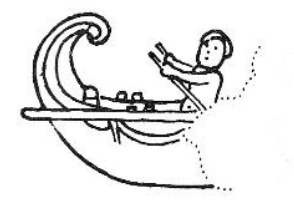
23 Paro - a light vessel, probably with mixed propulsion, often used by pirates, but little mentioned by ancient writers, which is an indication of its rarity.
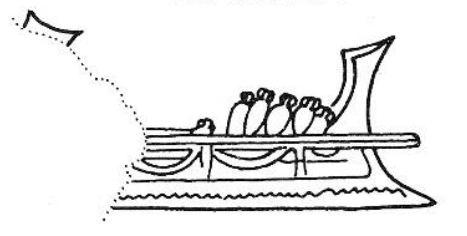
24 Amphora ship (no specific name) – a long ship lying low on the water, its silhouette reminiscent of a dolia8 ship, whose cargo was supplemented with amphorae.
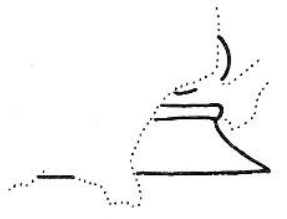
25 Aperta - a boat or open trading vessel, of an otherwise undetermined type..
Caution is advised with the above figurative depiction. Too often, drawings of ancient ships are aimed more at a decorative effect than at accuracy. The visual list of the Althiburus mosaic is therefore often placed next to the encyclopaedic list that we know from the Roman writer and linguist Aulus Gellius9. He too mentions ten common types of boats. The corbita, the ponto and the actuaria, which were common cargo ships throughout the Mediterranean, stand out in particular. In the Mediterranean, other ship types were known which were not used for overseas trade, such as the paro and the myoparo, which were apparently popular with pirates, and against which the catascopus / catascopicus, the celox / celes or the prosumia could be used. The hippago and the horeia / horiola (diminutive) were highly specialised boats, while the ratis / ratiaria (enlarging), the cydarum, the slatta and the placida were used on inland waterways and rivers or at sea.
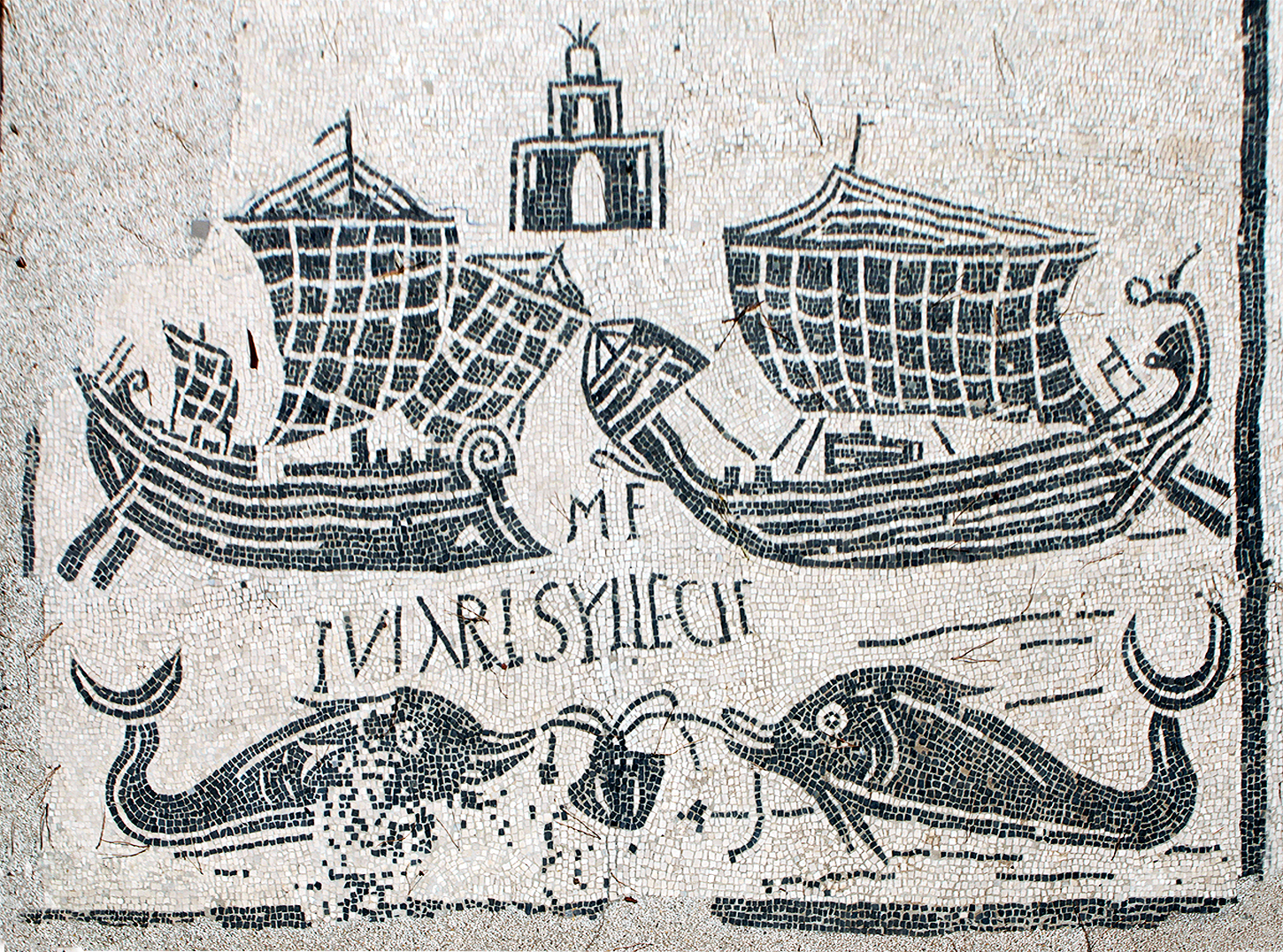
delle Corporazione in Ostia10. On the left probably a Cladivata and on the right a Corbita.
The cucuron graffiti
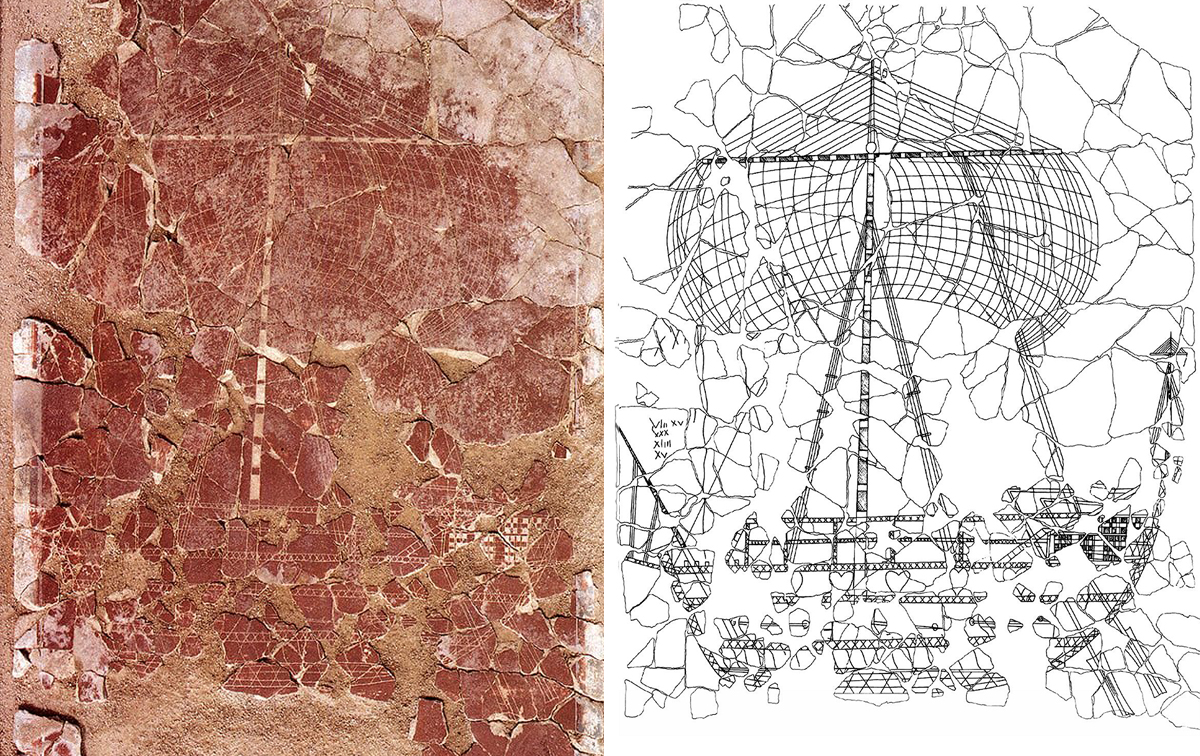
In the 1980s, a Gallo-Roman house in the French town of Cucuron, the so-called Villa Viély, was excavated, in which, on the first floor, there was a graffito of a merchant ship of the Corbita type. The graffito, drawn with a dry needle on a reddish-ochre plastered wall, dates from the 70s AD and was considered by French maritime archaeologist Patrice Romey to be "an exceptional work that occupies a special and even unique place among the many ship graffiti found in the ancient world"11.
Although the villa, far from a maritime context or a river navigable by the depicted ship, is only partially excavated, there is no indication that it would have been specifically intended for the holding of sailors' or shipowners' meetings. On the contrary, there is every reason to believe that this graffito was a private passion.
Research has shown that the villa, which also dates from the first century AD, soon suffered from dampness on the ground floor, forcing the inhabitants to move to the first floor. The graffito is therefore related to the private occupation of the first floor. Also, the room where the graffito was made has ordinary dimensions and does not indicate a ceremonial use or a festive reception room.
The graffito could be reconstructed from 525 found fragments which formed a panel of 170 cm high by 107 cm wide. In one of the adjacent rooms, fragments were found of a second ship's graffito in an identical style and detailing. Unfortunately, there were too few fragments here to make a reconstruction.
We are therefore dealing here with an iconographic programme that expresses a single theme: ships that are detached from any narrative background and that, moreover, are created by incision, a popular and spontaneous technique that is transformed here into refined images intended solely for the pleasure of the master of the house.
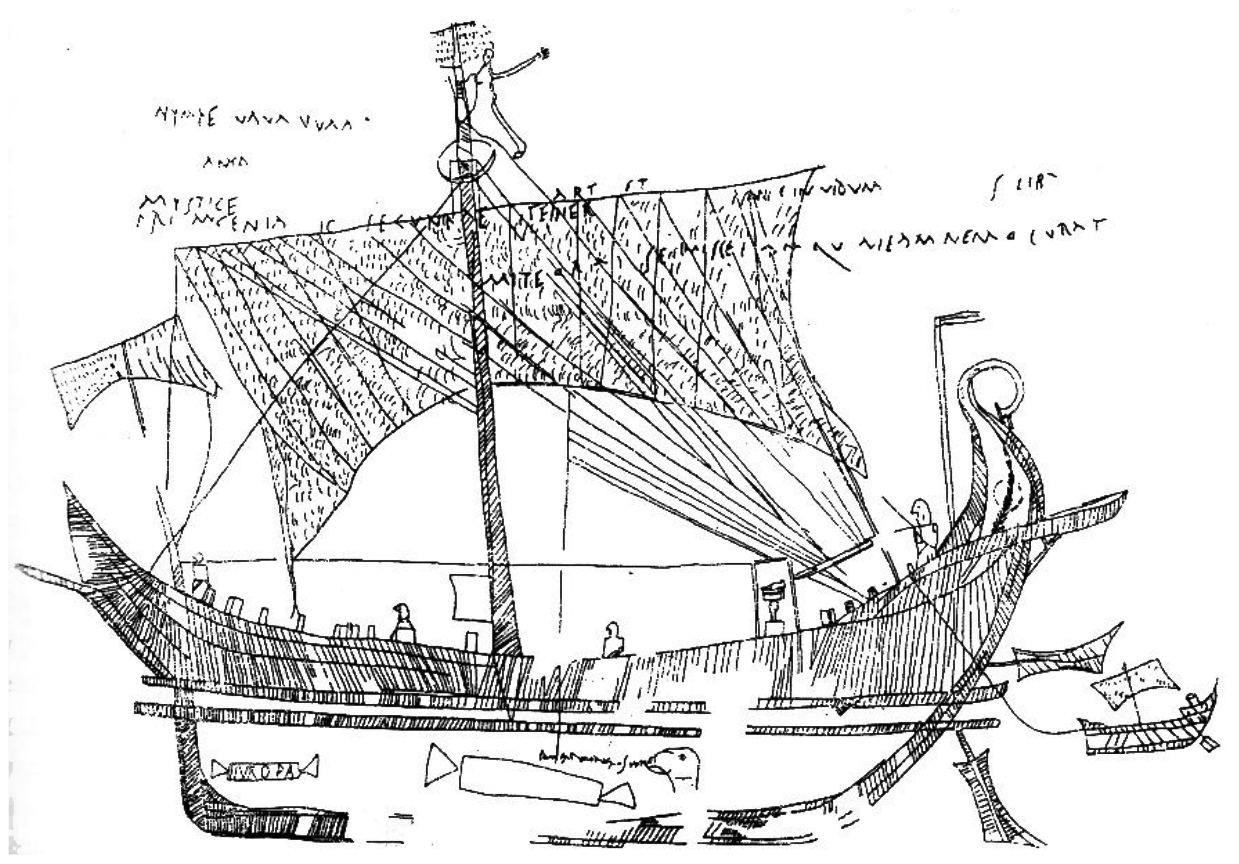
The Cucuron-vessel is more or less symmetrical and belongs to the large family of corbitae. It is immediately noticeable that it differs from the way other images are depicted, such as the ship Europa (see Figure 7). While the latter, with its swift brushstrokes, depicts the ship and its crew in their daily live in outline form, the Cucuran ship deliberately deviates from this lively and popular style.
Like all graffiti, the Cucuron ship uses lines and shading to depict recognizable elements, but deliberately seeks harmony, mainly through the play of symmetry and rhythm, which, according to Patrice Pomey, "gives it a character all of its own within an expression technique dominated by spontaneity"12.
The detail and quality of this image make it an exceptional work, for which no equivalent in the ancient world is known to date.
The question is to what extent the Cucuron graffito is a realistic representation of real models?
Based on analysis, several elements appeared to have been reproduced realistically, while other parts of the graffito were distorted or even fabricated due to the stylised form.
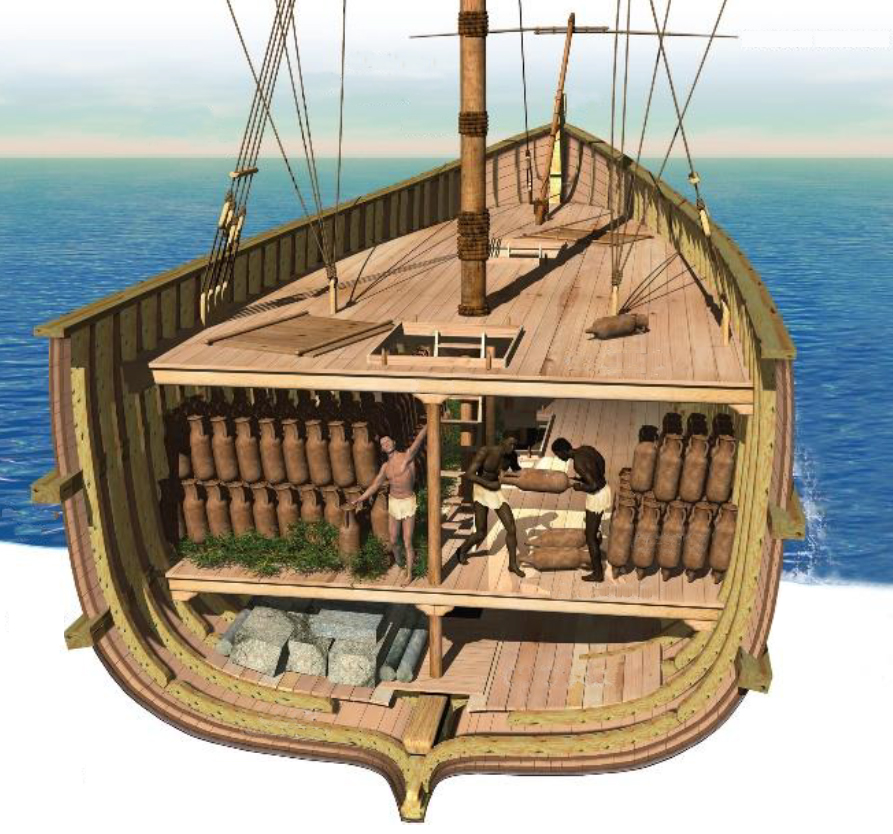
We will describe the exact analysis of this representation in a separate article later. We can, however, conclude that this large incised drawing is extremely well made and equals the refinement of a painting.
One may wonder why the house owner did not simply decorate the upper floor of his villa with frescoes, especially since 141 fragments of painted plasterwork (with candelabra and geometric motifs) have also been discovered in the residence? The answer is probably: because a "classical" naval painting, such as the one in which navies transform cold walls into sumptuous seascapes, would undoubtedly have pleased an audience of friends, but not the mind of the owner. He probably had the graffito made to show his knowledge of ships, although, given the many peculiarities or the absence of important elements of the rigging, it also shows that he did not really have a thorough knowledge of ships. The Cucuron graffito seems to illustrate the reverie of an intellectual about ships he knew little about.
Without being able to tell more about it, it is undoubtedly for himself that this landowner fascinated by ships had this unique work made into a large painting for his interior.
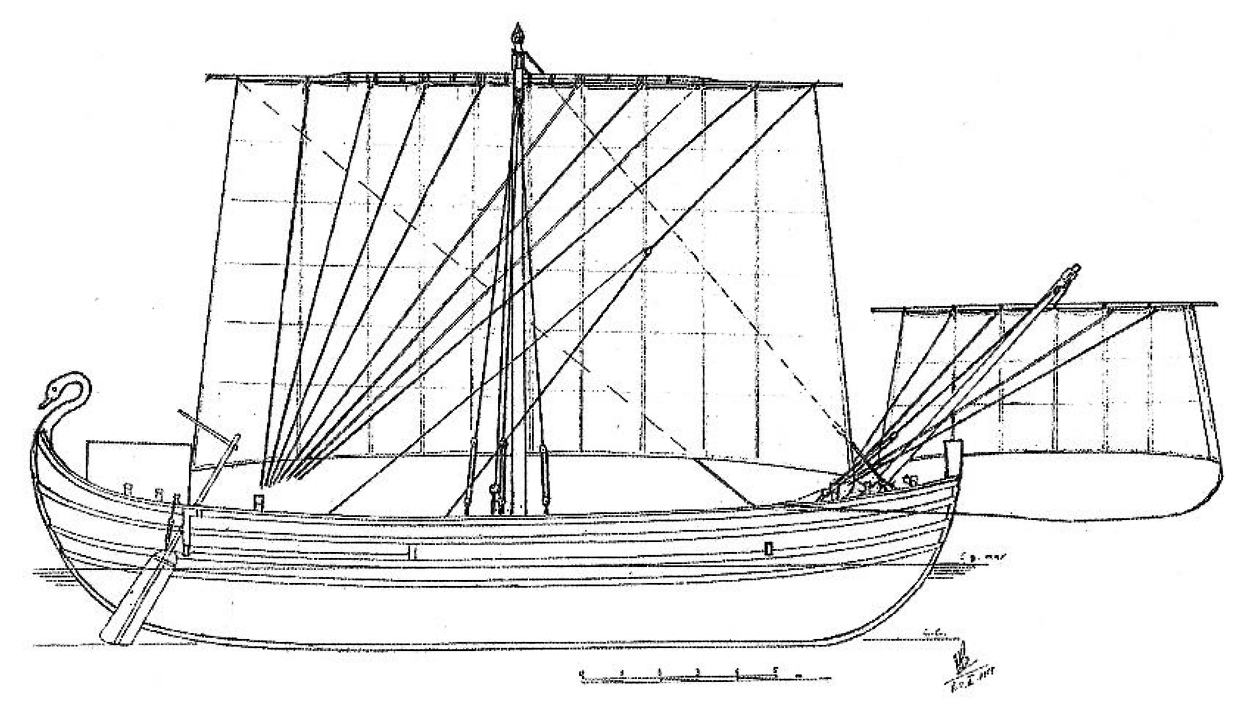
The towpath at Cabrières-d'Aigues.
As already mentioned, many sea-going vessels could not sail directly from a seaport with their cargo to its final destination. The cargo was then unloaded on the quays and immediately (or later) transferred to smaller ships. These could be smaller sailing or rowing boats or even ships pulled from a so-called towpath by donkeys or men.
About 10 km northeast of Cucuron, in Cabrières-d'Aigues, at the southern foot of the Luberon, the remains of a Roman funerary monument from the 2nd/3rd century AD were found in 1886.

In Figure 10 we see how a barque, loaded with two barrels, is pulled by three halciarii (boatmen), of which only two have survived, under a display of amphorae.
The whole transport scene exhales an atmosphere of realistic immediacy. Should we see this as an authentic rendering or rather as a symbolic representation to reinforce the expression of the action (the profession of the tomb owner)?
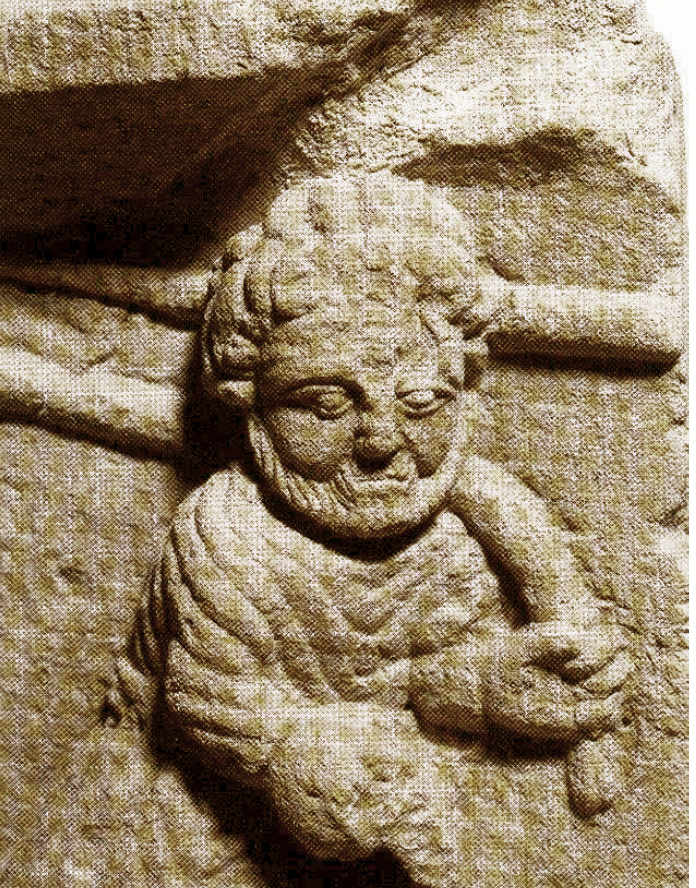
We do see here a sturdy boat, suitable for transport over difficult waterways, of a small tonnage that is barely sufficient to carry two barrels. The halcarii are realistically rendered with an expression of hard labour on their bearded faces. The sailor's direct holding of the helm confirms the idea of a small boat whose crew, as well as its barrels, would be to scale. Only the thick towing mast seems quite out of proportion.
There were several versions of this type of ship, mostly regional ones. The small ship in the Cabrières-d'Aigues relief could be a linter17. Although the depiction seems fairly realistically rendered, there are some remarks to be made about the functionality of the boat shown. The very pronounced rounding of the bottom of the boat seems unsuitable for the shallow bed of small rivers or waterways. A flat bottom would be much more suitable here.
The towing of a lightly loaded and robust boat seems to indicate a fast current of water and the barrels seem too high in relation to the vessel's centre of gravity, making the whole thing unstable and even dangerous.
Based on these elements, we may conclude that the boat of Cabrières-d'Aigues, despite its seemingly realistic elements, may have looked quite different from the one depicted here.
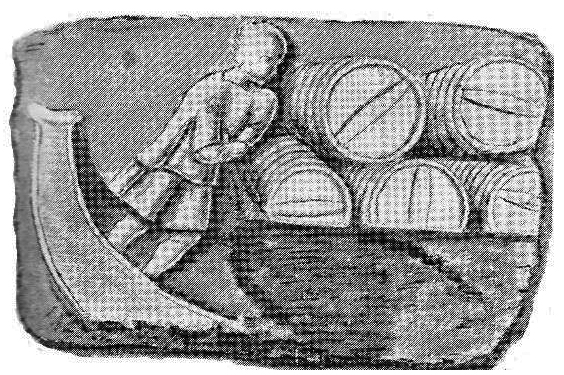
In contrast to this figurative representation, another vessel on the now-lost merchant's tomb found in Arlon (see Figure 12) shows a stack of barrels as is still used in wine cellars, with the curve of each barrel fitting into an opening in the bottom row. The boat may not look large, but it is loaded with many barrels.
These parallels make it likely that the Cabrières boat was not transporting barrels in pairs, but in large batches, symbolised by two barrels.
Even from a simple economic point of view, it is difficult to see what interest a carrier would have in employing four men to transport only two barrels. A properly hitched mule with a coachman could have transported that, at much lower cost. "The load of an average barge [10 tonnes] can be compared to what 30 carts, pulled by nearly 300 mules, can carry," says François de Izarra 19.
Even though the Cabrières boat probably had a capacity of less than 10 tonnes, in this case transport by boat was considerably more economical than by carts.
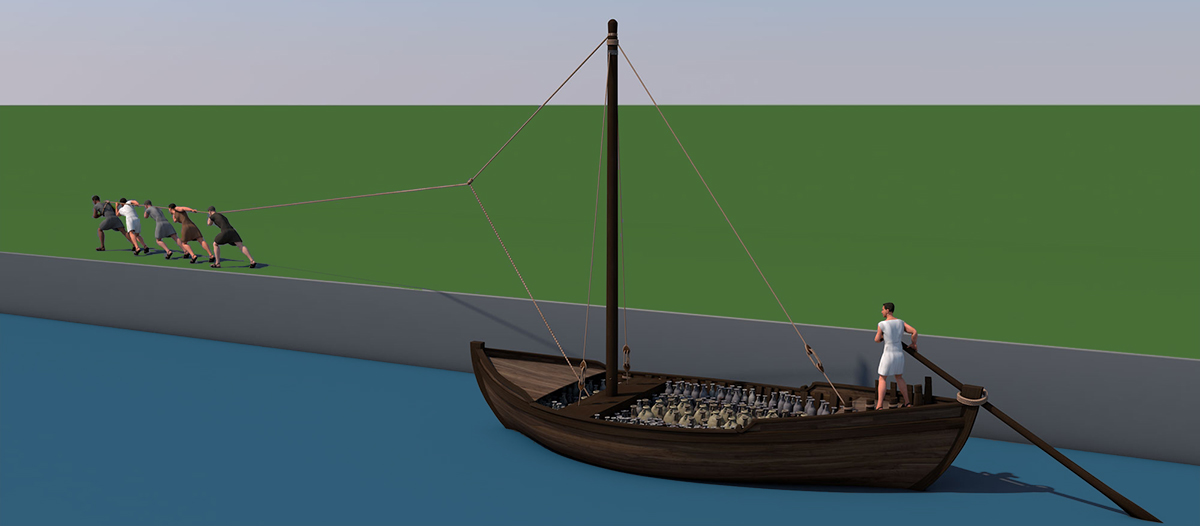
- Sources
- - Romain Sauterel-Iconographie romaine majeure de la navigation en Gaule narbonnaise et dans le bassin rhodanien, Lausanne 2019
- - Patrice Pomey-Le navire de Cucuron. Un graffito décoratif
Notes- 1: Collection Musei Capitolini, Rome (3rd century AD)
- 2: Paul-Marie Duval (Paris 1912-Versailles 1997), Mélanges d’archéologie et d’histoire, tome 61, 1949, p. 119-149.
- 3: Gauckler-Monuments et mémoires de la Fondation Eugène Piot, tome 12, fascicule 1, 1905, p. 145
- 4: The term actuaria is generally used to describe any seagoing vessel.
- 5: The simplicity of this vessel has led to the name being universally used over time to refer to a wide variety of river craft, such as barges used in river seaports, shallow draft barges with towing masts to serve difficult waterways, or even small boats used to connect the two banks of a river.
- 6: Cydarum probably became a generic name, at least in the region, to denote barques with eight oars and light ships with sails and oars.
- 7: From ship archaeology we know that these horeias were built in numerous versions varying in length from approximately 6 to 15 m.
- 8: Dolium (plural: dolia) - Large oval-shaped pottery for transporting goods (mostly wine).
- 9: Aulus Gellius (130-180 AD), The Attic Nights, book X, chapter XXV, 5.
- 10: Statio 23: the boatmen and traders from Syllectum (Tunisia).
- 11: Patrice Pomey (1943 – 2021), « Le navire de Cucuron. Un graffito décoratif » - 1993, p. 149.
- 12: Pomey, 1993, p. 152.
- 13: Graffito from Pompeii (casa della nave Europa). Drawing from Pomey, 2005, p. 67.
- 14: Archaeological reconstruction from Freire & alii 2007, pl. VII.
- 15: Model taken from: Bonino 2015, p. 45.
- 16: Musée Lapidaire d'Avignon.
- 17: A boat of Gallic origin mentioned in the literature in use on inland waterways.
- 18: Photo taken from: Marlière Elise, L’outre et le tonneau dans l’Occident romain, Mergoil, Montagnac, 2002, p. 125.
- 19: Izarra 1993, p. 81.
- 20: The ship, named Mandirac 1, (found as a wreck) is towed across the river Aude.






 We are committed to providing versions of our articles and interviews in several languages, but our first language is English.
We are committed to providing versions of our articles and interviews in several languages, but our first language is English.